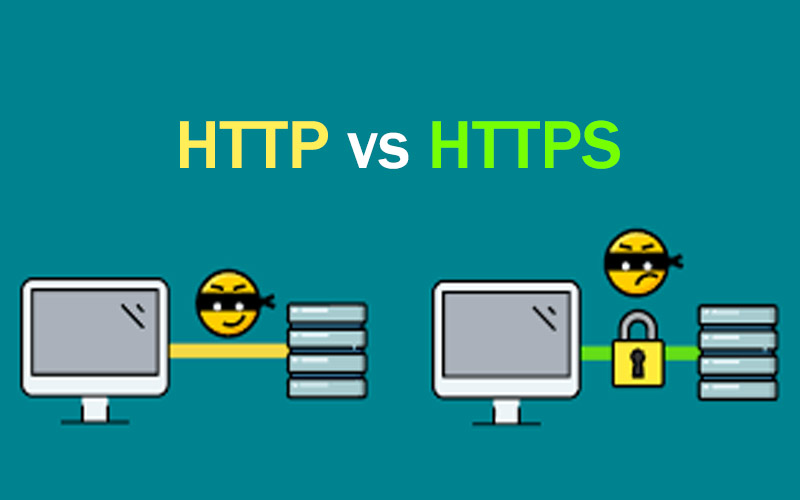
HTTP (Hypertext Transfer Protocol) is the application protocol launched in 1989. It is used as the standard communication on the WWW (World Wide Web). In 1997, the HTTP/1.1 protocol was released and underwent a few revisions. However, in 2015, the re-imagined version called HTTP 2.0 came to use. It offers several methods to reduce latency, mainly when dealing with server-intensive graphics, mobile platforms, and videos.
HTTP 2.0 has become more popular and supports around a third of all the websites in the world. Since this landscape is continuously changing, web developers need to understand the difference between HTTP 1.1 and HTTP 2.0. It allows them to make efficient and informed decisions about evolving best practices.
Advantages of HTTP 2.0 and HTTP 1.1
- Multiplexing
HTTP 1.1 usually loads resources one after another. So, if a single resource cannot load properly, it blocks all other resources behind it. Conversely, HTTP 2.0 can access a single TCP connection to send several data streams at once. Thus, you will confront the hassles of resources blockage.
HTTP 2.0 does this perfectly by splitting data into binary-code messages and then numbering these messages. As a result, the client knows which stream every binary message belongs to. Therefore, multiplexing becomes possible.
- Header Compression
Compared to larger files, small files load more quickly and easily. Both HTTP 1.1 and HTTP 2.0 compress HTTP messages to make them smaller and speed up the web performance. But, HTTP 2.0 consistently accesses a more advanced compression method called HPACK. It eradicates the redundant information in the HTTP header packets. It also removes the few bytes from each HTTP package.
- Server Push
The server serves content to the client device whenever the client asks for it. But, this approach is not a good practice for the modern webpage because it often involves many dozen separate resources that clients should request. The advent of HTTP 2.0 sorts out the issue significantly. It allows the server to push the content to the client even before the client asks for it. In addition, the server sends the message allowing the client knows what pushed content to expect.
Why Do You Need HTTP 2.0?
HTTP is the foundation of data communication for the web. HTTP 2.0 is the first and most crucial HTTP protocol update since 1997. IETF has published the HTTP 1.1 and worked over its lifespan. However, it allows the single active and one outstanding request for a single TCP. Web browsers tried to get around it by providing parallel requests between server and browser with multiple TCP connections.
But, it leads to congestion that harms the performance, network, and poor user experience. Due to the limitations of HTTP 1.1, the entire industry looks for the best practice and requires a new protocol. This is where HTTP 2.0 comes as a lifesaver. IETF’s HTTP Working Group developed HTTP 2.0.
This protocol is binary instead of textual protocol to address all the issues of HTTP 1.1. Furthermore, it takes the World Wide Web to the next level. Right from its release, HTTP 2.0 supports all the major browsers, including Firefox, Chrome, Internet Explorer 11, and Safari.
What Makes HTTP 2.0 More Popular?
- Compared to HTTP 1.1, HTTP 2.0 provides enhanced performance and speed. It attracts web developers a lot.
- Since it is a binary protocol, it is more compact and travels much faster on the wire. In addition, it is less susceptible to issues and errors. It means web developers need not worry about anything.
- HTTP 2.0 is completely multiplexed, which means it sends multiple requests between servers and browsers simultaneously. Thus, it loads the page faster and spreads enormous network resources.
- With the HPACK head compression, it minimizes the overhead. It also allows the data sent between server and browser in a single trip.
- It incorporates the new ALPN extension, which allows for faster-encrypted connections and minimizes load times.
- It reduces the additional round-trip times, and thus websites load much faster with minor optimization.
- HTTP 2.0 does not need the workarounds such as domain sharding and asset concatenation.
- It is a mandatory requirement for the TLS/SSL certificate. It renders higher compatibility with most browsers.
- HTTP 2.0 steaming access the prioritization tree for more efficient and faster transmission.
Is HTTP 2.0 Suitable For All Websites?
Yes! Since all modern browsers support HTTP 2.0, it has become more suitable for all websites. So, web developers do not hesitate to take access to that protocol. You will know how the clients benefit from the websites when going through the benefits.
All you have to do is learn in-depth about HTTP 2.0 and take the best out of it. HTTP protocols are continuously evolving, thus paying closer attention to the new updates.
Is It Mandatory To Move To HTTP 2.0?
HTTP 2.0 is a more powerful and robust protocol rendering increased page load speed and security. Moreover, it accesses the single TCP connection and keeps it warm for concurrent downloads. Users confront many hassles and bad experiences due to the slow websites. On the other hand, it makes the site owners lose sales and profits adversely.
With HTTP 2.0, developers will help users stay away from these issues. The protocol enhances the website’s performance without hiring the developers to spend more hours writing optimization code. The backward compatibility is the added advantage of HTTP 2.0. It ensures a seamless switch for the customers who still rely on the previous protocol version. It means you do not think much about upgrading the protocol.
Now, you understand the importance of HTTP 2.0 over HTTP 1.1. If you want to use HTTP 2.0 but do not know how to do it correctly, seek professional assistance.
Renu Yadav is the top digital marketer in JDM Web Technologies with several years of experience. Digital marketers also can manage content management systems.

